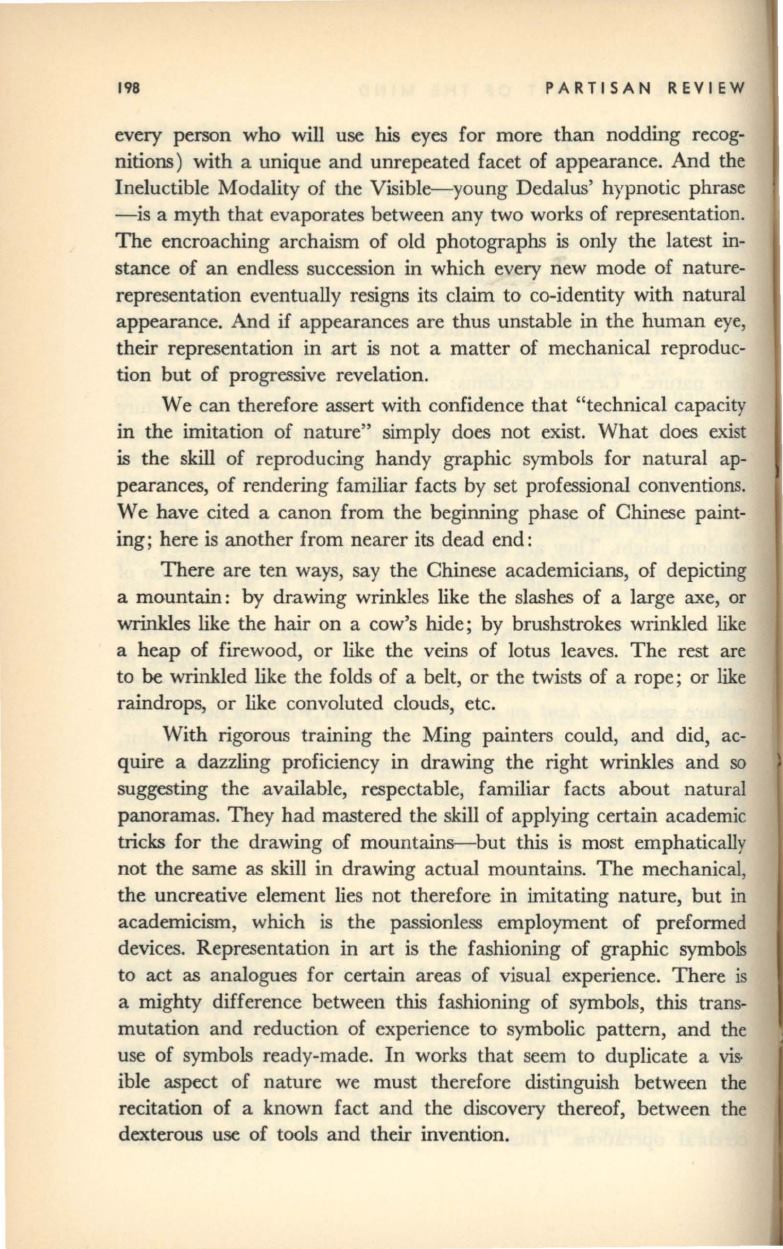
198
PARTISAN REVIEW
every person who will use his eyes for more than nodding recog–
nitions) with a unique and unrepeated facet of appearance. And the
Ineluctible Modality of the Visible-young Dedalus' hypnotic phrase
-is a myth that evaporates between any two works of representation.
The encroaching archaism of old photographs is only the latest in–
stance of an endless succession in which every new mode of nature–
representation eventually resigns its claim to co-identity with natural
appearance. And if appearances are thus unstable in the human eye,
their representation in art is not a matter of mechanical reproduc–
tion but of progressive revelation.
We can therefore assert with confidence that "technical capacity
in the imitation of nature" simply does not exist. What does exist
is the skill of reproducing handy graphic symbols for natural ap–
pearances, of rendering familiar facts by set professional conventions.
We have cited a canon from the beginning phase of Chinese paint–
ing; here is another from nearer its dead end:
There are ten ways, say the Chinese academicians, of depicting
a mountain: by drawing wrinkles like the slashes of a large axe, or
wrinkles like the hair on a cow's hide; by brushstrokes wrinkled like
a heap of firewood, or like the veins of lotus leaves. The rest are
to
be
wrinkled like the folds of a belt, or the twists of a rope; or like
raindrops, or like convoluted clouds, etc.
With rigorous training the Ming painters could, and did, ac–
quire a dazzling proficiency in drawing the right wrinkles and so
suggesting the available, respectable, familiar facts about natural
panoramas. They had mastered the skill of applying certain academic
tricks for the drawing of mountains--but this is most emphatically
not the same as skill in drawing actual mountains. The mechanical,
the uncreative element lies not therefore in imitating nature, but in
academicism, which is the passionless employment of preformed
devices. Representation in
art
is the fashioning of graphic symbols
to act as analogues for certain areas of visual experience. There
is
a mighty difference between this fashioning of symbols, this trans–
mutation and reduction of experience to symbolic pattern, and the
use of symbols ready-made. In works that seem to duplicate a
vis–
ible aspect of nature we must therefore distinguish between the
recitation of a known fact and the discovery thereof, between the
dexterous use of tools and their invention.


